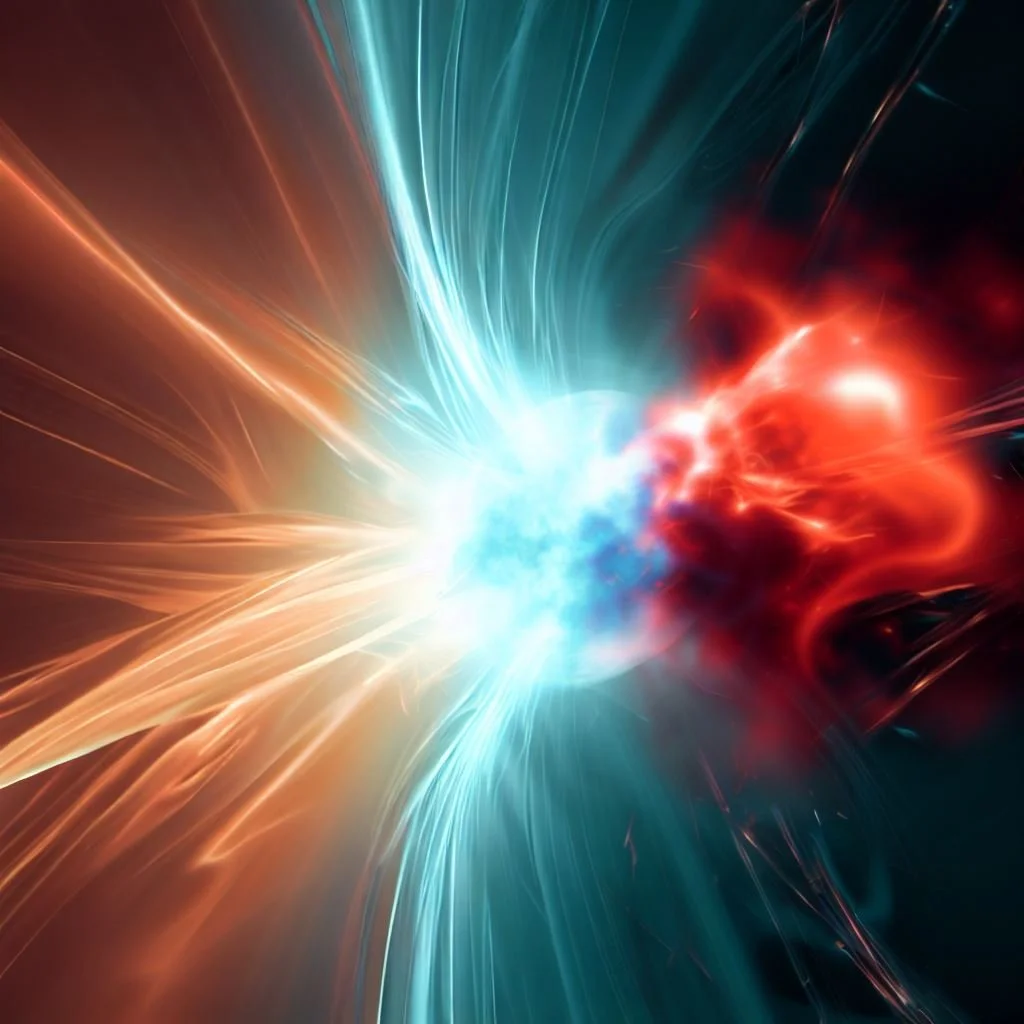Antimatter responds to gravity like Einstein predicted: falls down, not up
For the first time, physicists have confirmed that gravity affects matter and antimatter particles in a similar way. Observing this simple phenomenon had eluded physicists for decades and the result is a milestone in the study of the properties and behaviour of antimatter.
By CERN
Inside the ALPHA experiment facility at CERN, where physicists can make antihydrogen. Credit: Maximilien Brice / CERN
Isaac Newton's historic work on gravity was apparently inspired by watching an apple fall to the ground from a tree. But what about an anti-apple made of antimatter, would it fall in the same way if it existed? According to Albert Einstein’s much-tested theory of general relativity, the modern theory of gravity, antimatter and matter should fall to Earth in the same way. But do they, or are there other long-range forces beyond gravity that affect their free fall?
In a paper published in Nature, the ALPHA collaboration at CERN’s Antimatter Factory shows that, within the precision of their experiment, atoms of antihydrogen – a positron orbiting an antiproton – fall to Earth in the same way as their matter equivalents.
“In physics, you don't really know something until you observe it,” says ALPHA spokesperson Jeffrey Hangst. “This is the first direct experiment to actually observe a gravitational effect on the motion of antimatter. It’s a milestone in the study of antimatter, which still mystifies us due to its apparent absence in the Universe.”
Gravity is the attractive force between any two objects with mass. It is by far the weakest of the four fundamental forces of nature. Antihydrogen atoms are electrically neutral and stable particles of antimatter. These properties make them ideal systems in which to study the gravitational behaviour of antimatter.
Antimatter atoms in a magnetic trap.
The ALPHA collaboration creates antihydrogen atoms by taking negatively charged antiprotons, produced and slowed down in the Antimatter Factory’s AD and ELENA machines, and binding them with positively charged positrons accumulated from a sodium-22 source. It then confines the neutral – but slightly magnetic – antimatter atoms in a magnetic trap, which prevents them from coming into contact with matter and annihilating.
Until now, the team has concentrated on spectroscopic studies in the ALPHA-2 device, shining laser light or microwaves onto the antihydrogen atoms to measure their internal structure. But the ALPHA team has also built a vertical apparatus called ALPHA-g, which received its first antiprotons in 2018 and was commissioned in 2021. The ‘g’ denotes the local acceleration of gravity, which, for matter, is about 9.81 metres per second squared.
This apparatus makes it possible to measure the vertical positions at which the antihydrogen atoms annihilate with matter once the trap’s magnetic field is switched off, allowing the atoms to escape.
Credit: Conceptual image of an antihydrogen atom collides violently with a hydrogen atom generated by DALL-E 2 from Microsoft Bing.
This is exactly what the ALPHA researchers did in their new investigation, following a proof-of-principle experiment with the original ALPHA set-up in 2013. They trapped groups of about 100 antihydrogen atoms, one group at a time, and then slowly released the atoms over a period of 20 seconds by gradually ramping down the current in the top and bottom magnets of the trap.
Computer simulations of the ALPHA-g set-up indicate that, for matter, this operation would result in about 20% of the atoms exiting through the top of the trap and 80% through the bottom, a difference caused by the downward force of gravity. By averaging the results of seven release trials, the ALPHA team found that the fractions of anti-atoms exiting through the top and bottom were in line with the results of the simulations.
“The next step is to measure the acceleration as precisely as we can,” says Hangst.
The full study involved repeating the experiment several times for different values of an additional bias magnetic field, which could either enhance or counteract the force of gravity. By analysing the data from this bias scan, the team found that, within the precision of the current experiment (about 20% of g), the acceleration of an antihydrogen atom is consistent with the familiar, attractive gravitational force between matter and the Earth.
“It has taken us 30 years to learn how to make this anti-atom, to hold on to it, and to control it well enough that we could actually drop it in a way that it would be sensitive to the force of gravity,” says Hangst. “The next step is to measure the acceleration as precisely as we can,” continues Hangst. “We want to test whether matter and antimatter do indeed fall in the same way. Laser-cooling of antihydrogen atoms, which we first demonstrated in ALPHA-2 and will implement in ALPHA-g when we return to it in 2024, is expected to have a significant impact on the precision.”
ALPHA-G 2023 anti-hydrogen/gravity
Provided by CERN
Reference: Anderson, E.K., Baker, C.J., Bertsche, W. et al. Observation of the effect of gravity on the motion of antimatter. Nature (2023). DOI: https://doi.org/10.1038/s41586-023-06527-1



